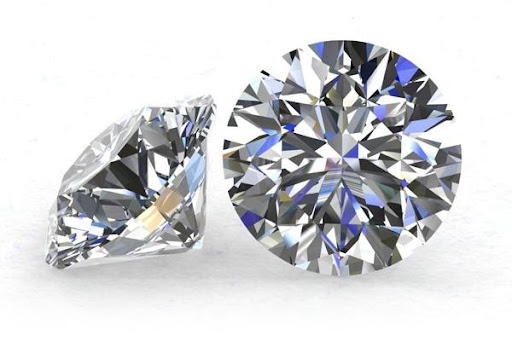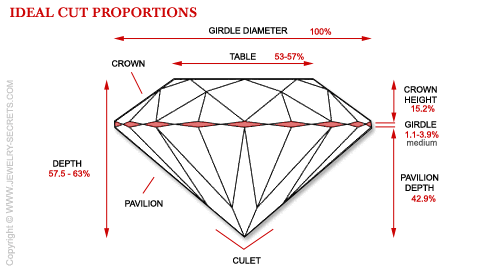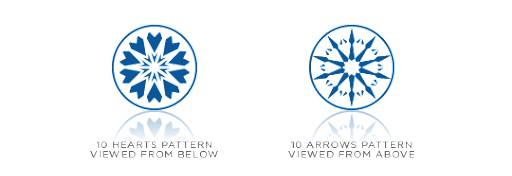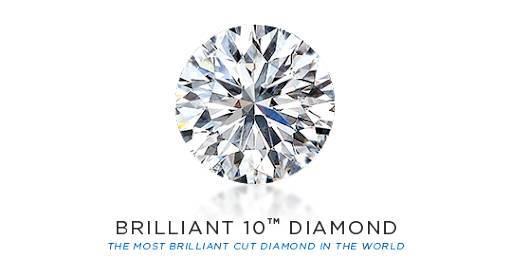
Have you heard the phrase "Rome wasn't built in a day"? The same is true when it comes to creating the ideal diamond cut. The round brilliant cut diamond is the most popular diamond shape for an engagement ring today. The diamond was created over six centuries and by many craftsmen from one generation to the next. As a result, the diamond cutting process has undergone significant changes over time. But what is a brilliant cut diamond, and why is it thought to be the best cut?
Before the GIA (Gemological Institute of America) established the 4C's (Color, Clarity, Cut, and Carat Weight) in 1939, there was no universal grading system for determining the quality and value of a diamond. While nature determines the diamond's color, clarity, and carat weight, the diamond's cut is in the hands of a master craftsman. As a result, the only characteristic of a diamond that is not determined when it is formed is its cut.
Before the great Kimberley diamond rush, which occurred after the first discovery of diamonds in South Africa in 1867, diamonds were cut and polished in a very different way than the brilliant cut diamonds that we see today. The anatomy of a diamond has evolved over time, each step closer to achieving the ideal cut. Table facets have grown in size, while lower half facets and star facets have grown in length. The diamond's culet appears to be smaller than before. The new cutting techniques were refined over time to ensure that the diamond's fire, scintillation, and brilliance were maximized.

Marcel Tolkowsky, a Belgian-born gemologist and mathematician, established the best way to design, cut, and polish the ideal diamond in 1919. He spent years figuring out the ideal proportions and symmetry for a diamond to reach its full potential. A diamond, according to Marcel, is nothing more than a system of mirrors and windows. As a result, the stone's table was designed mathematically to capture as much light as possible.
Light enters the diamond through the top and exits through the top when it is cut and polished according to Marcel's scientific calculations, giving it maximum fire, brilliance, and scintillation. To be classified as a brilliant cut diamond, a stone must have 57 facets (58 facets if it is polished with a culet). The diamond's crown must have one table facet, eight bezel facets, eight star facets, and sixteen upper girdle facets. On the other hand, the pavilion must have eight main pavilion facets, sixteen lower girdle facets, and a culet.
But that's not all; the pavilion, crown, and table must all be proportioned correctly. If the diamond's table is too small, the stone will not reflect enough light. If the table is too large, the diamond will lose too much light. The pavilion cannot be too deep or too shallow; otherwise, light will be lost through the bottom, resulting in reduced brilliance.
The round shape, in addition to the cut, was created to give the ring a sense of warmth, empathy, and dependability. The shape also adds to the love and commitment symbol, perfectly capturing your relationship. Another reason why the round brilliant cut was chosen as the ideal engagement ring by brides.

A Hearts and Arrows diamond, also known as the Marcel Tolkowsky Super Ideal Cut diamond – Shimansky's Eight Hearts diamond, is created when a diamond is cut to perfect proportion and symmetry. What distinguishes the Marcel Tolkowsky and the Eight Hearts diamond from the average round brilliant cut diamond, though? Eight perfect arrows can be seen from the top of the diamond, while eight perfect hearts can be seen from the bottom. This is evidence that the diamond has been polished to perfection in terms of proportion and symmetry.

Shimansky, a jewelry company, elevated the round brilliant cut diamond to new heights. The jeweller set out to create the world's most brilliant cut diamond after years of research and constant pursuit of perfection. The end result is a 71-faceted round brilliant cut diamond with 10 arrows on top and 10 hearts on the bottom. What's the end result? A diamond that is 25% brighter than any other round brilliant cut diamond on the planet. The art of diamond shaping has progressed from being beautiful to being absolutely magnificent over time. The world's most skilled craftsmen create diamond rings that reach their full potential thanks to Tolkowsky's research. Today, brides-to-be all over the world can wear a ring with the maximum amount of fire, brilliance, and scintillation.

